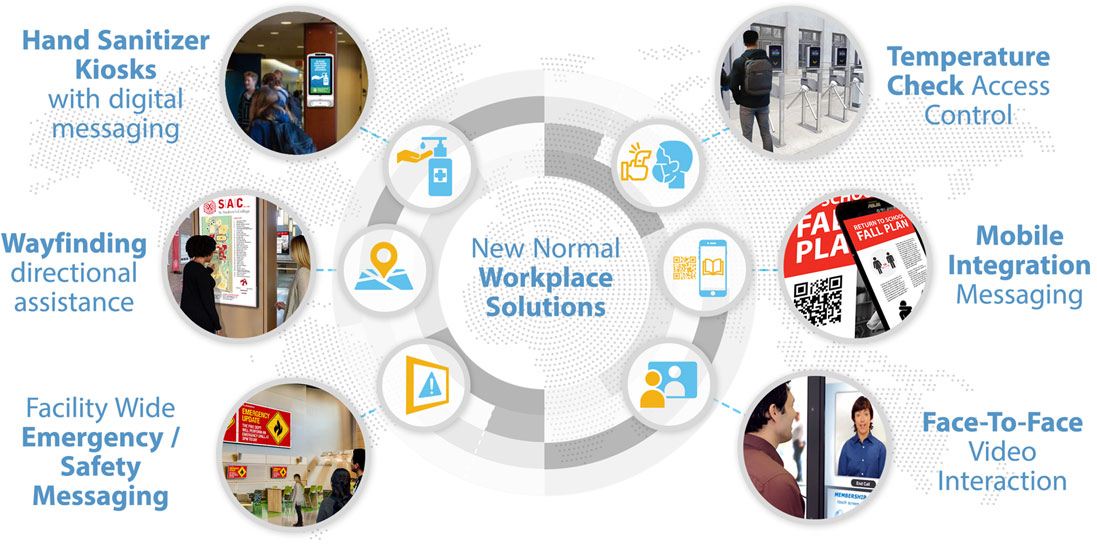Digital Signage and the New Normal Workspace Part 2
Schools
Also see Part 1: Office Spaces | Part 3: Food & Beverage
Keeping our children, teachers and administrators safe.
As COVID-19 swept the globe it forced students to study from home as best they could, it cancelled proms and wiped out graduations. While those were necessary steps taken at the time, there is a significant push to have students return to on-site schooling for the new school year, despite the dangers of potential exposure to the virus. Whether it’s full-time or some kind of hybrid plan, schools are doing their best to find ways to keep students, teachers, and staff healthy and safe as they move to re-open their doors.Using Technology to Protect and Communicate in the New Normal
Just as they used technology when they were forced to move to remote learning, schools are looking to leverage technology to help prepare their institutions to re-open. With safety being the top priority, administrators are finding ways to prevent spread, to educate, and to inform. Digital kiosks with touchless hand sanitizers and integrated temperature checks combined with networked digital displays provide two key elements of safety, security and communication that are essential parts of any effective plan.Innovating Safety with Digital Signage Technology
The COVID-19 pandemic has prompted a surge of innovation to find new and effective ways to address ongoing safety needs. Communication and cleanliness are two key factors, but the abilities of digital sign systems offer new and innovative methods to address concerns in school settings.Digital signs have long incorporated wayfinding abilities to help visitors find stores in shopping malls. Now wayfinding is being used to help students find classrooms and facilities, preventing people from wandering around looking for their destination.
For those institutions that require mandatory face coverings, digital display technology can detect if someone is wearing a mask or not.
Video calls are now common on our smartphones, and that technology has carried over into digital signage as a way to interact in real time without travelling to another floor, building or standing directly face-to-face.
Other technologies such as occupancy counting, queues, smartphone interaction, and more are all part of innovated integrated solutions that work together to help limit spread.

